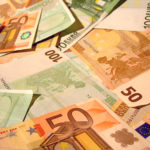Gold fell on Monday amid a firm dollar but still held close to a 5-month high as investors feared that a possible Greek collision with international lenders would destabilize the euro area. Copper tumbled to the lowest in 5-1/2 years due to the uncertainties in Europe and concerns of weaker demand from top metals consumer China.
Comex gold for delivery in February traded at $1 282.6 per troy ounce at 10:34 GMT, down 0.77% for the day, shifting in a daily range of $1 299.2-$1 280.0. The precious metal settled 0.62% lower on Friday at $1 292.6.
The Syriza party got better-than-expected voter confidence on Sunday, with only two seats apart from an absolute majority. Party leader Alexis Tsipras has promised to wipe out the better half of the country’s debt, which was accumulated by Greece’s €240 billion bailout deal.
However, the new prime minister’s intentions do not fall in line with European leaders, who have insisted that Greece must comply with its economy-saving deal’s terms.
Prior prime minister Antonis Samaras has warned that the conflict of interests between Greece and Europe may lead to the country’s exit from the Eurozone. The news of the strong Syriza win revitalized instability concerns in European markets and pushed gold prices higher.
“People are very uncertain about the markets and are wondering whether Greece will break out of the euro zone,” said Ronald Leung, chief dealer at Lee Cheong Gold Dealers in Hong Kong, cited by CNBC.
The precious metal was also supported by increasing speculations that the Federal Reserve will not increase interest rates at its meeting this week.
Although the US economy is showing signs of improvements, which weigh in favor of an interest hike, policy makers might be worried that inflation has not yet reached their 2% target level due to pressure from plunging oil prices.
Gold is up 9% so far this month as economic instability across Europe and falling oil prices have pushed traders to launch a wave a save-haven bids. Additionally, speculators have continuously shown support by increasing their bets on the yellow metal.
According to the U.S. Commodity Futures Trading Commission, net-long positions in gold futures and options climbed 29% in the week to January 20, marking their fourth consecutive weekly increase.
Assets in the SPDR Gold Trust, the biggest bullion-backed ETF, climbed 1.2 tons on Friday to 741.65 tons. Changes in holdings typically move gold prices in the same direction.
The US dollar index for settlement in March was up 0.30% at 95.335 at 10:34 GMT, holding in a daily range of 95.160-95.850, its highest in at least a decade. The US currency gauge climbed 0.73% on Friday to 95.053. A stronger greenback makes dollar-denominated commodities more expensive for holders of foreign currencies and curbs their appeal as an alternative investment, and vice versa.
Copper
Copper tumbled as well amid concern the new Greek government may destabilize the euro area and fears of weakening demand from top metals consumer China.
Comex copper for delivery in March traded 1.62% lower at $2.4610 per pound at 10:34 GMT, having earlier fallen to $2.4190 per pound, the lowest since July 2009. The contract slid 3% on Friday to $2.5015, settling the week 4.4% lower.
The copper market has been hammered down by the outlook for a supply surplus this year as global economy growth slows, with Chinese expansion at the lowest in more than two decades, while supplies continue to rise. Goldman Sachs predicted that copper will fall by around 9% this year amid lower production costs due to a stronger dollar and lower oil prices.
Data last week showed that the International Monetary Fund followed the World Bank into slashing its outlook for the global economy this year and the next, citing slower growth in almost all major economies.
Meanwhile, preliminary private data showed last week that the contraction in China’s manufacturing sector continued for a second month, although the figures topped analysts’ forecasts. The HSBC Flash China Manufacturing PMI rose to 49.8 from December’s final reading of 49.6, while the Flash China Manufacturing Output Index hit a three-month high of 50.1 from 49.9 in December.
Earlier in the week the National Bureau of Statistics reported that the worlds second-biggest economy expanded by an annualized 7.3% in the fourth quarter, exceeding broad expectations for 7.2% but also pushing full-year growth down to 7.4% in 2014, the lowest since 1990 and below the government’s targeted 7.5%.
Also dragging on prices, inventories tracked by the LME rose 4.3% to 235 150 tons on January 23rd, the highest in about nine months. Stockpiles monitored by the exchange have surged 33% this year.
Mark Keenan, analyst at Societe Generale, said for CNBC: “That (the inventory rise) combined with a rising dollar and Greek concerns in an already vulnerable copper market are weighing on prices.”
On the positive side, business sentiment in Germany improved in January, with the corresponding German Ifo Business Climate Index hitting 106.7 from 105.5 in December, while Japanese exports surged by an annualized 12.9% in December, compared to projections for 11.0%.
Market players no awaited tomorrows consumer confidence, durable goods orders and housing data from the US to gauge the US economys recovery pace and outlook for dollar strength, while anticipating Wednesdays all-important FOMC after-meeting announcement.





